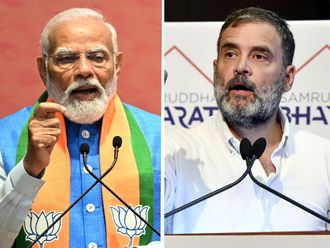Mumbai: Maharashtra Chief Minister Devendra Fadnavis on Monday launched Phase 1 of the Mumbai surveillance project, under which 1,381 cameras have been mounted at 434 locations across south Mumbai.
The development comes six years after the Ram Pradhan committee, which was set up after the 26/11 terror attacks to look at measures to strengthen police machinery, recommended a closed-circuit or CCTV network for the city.
The project was flagged off during the former Congress-led government in Maharashtra, after the 2008 attacks, when terrorists killed 166 people and injured over 300.
All the locations that were attacked — Taj Mahal Hotel, Leopold Café, Chhatrapati Shivaji Terminus, Oberoi Trident and Nariman House — are in South Mumbai, where the government headquarters, courts, educational and business hubs are also located.
Fadnavis said the next phases of the project would be completed by October next year when 6,000 CCTVs will be included in the network for the entire city. Following this, “There will be a 100 per cent command and control system integration. With the data integration, we will be able to evolve a comprehensive strategy to tackle crime,” he said.
The entire project covering all the crucial spots in the city, with the largest digital camera surveillance in the country, is expected to cost Rs9.49 billion (Dh522 million).
The chief minister said face detection, number plate identification and data analysis system facilities would be available after the entire project is completed.
The project also includes 20 thermal cameras on the city’s coastline to record any possible movement in the sea in order to detect intruders coming in from the Arabian Sea coastline, as they did seven years ago.
“My government’s endeavour is to ensure optimum use of manpower with technological intervention for effective policing. We plan to complete all the three phases before the October 2016 deadline,” Fadnavis said.
He added that the project will help in crime prevention, detection, prosecution and conviction. The data feed from the CCTVs would be sent to the headquarters of Mumbai Police and Traffic Police at the Worli Command Centre.
Fadnavis also said important cities in the state would be brought under digital surveillance and that Pune was the first city to be under CCTV surveillance.
The digital surveillance in Nashik would be upgraded from the system used for the Nashik Kumbh religious event. Nagpur is also expected to come under CCTV surveillance network.
Additional Chief Secretary (Home) K.P. Bakshi said that the project was delayed since they had to include the Sessions Court premises at Kala Ghoda and install more cameras at Girgaum Chowpatty during the last stages of the network, taking the tally of cameras from 1250 to 1381.
Mumbai police commissioner Ahmad Javed called it a “big day for Mumbai Police,” and it would help them policing on several fronts.












